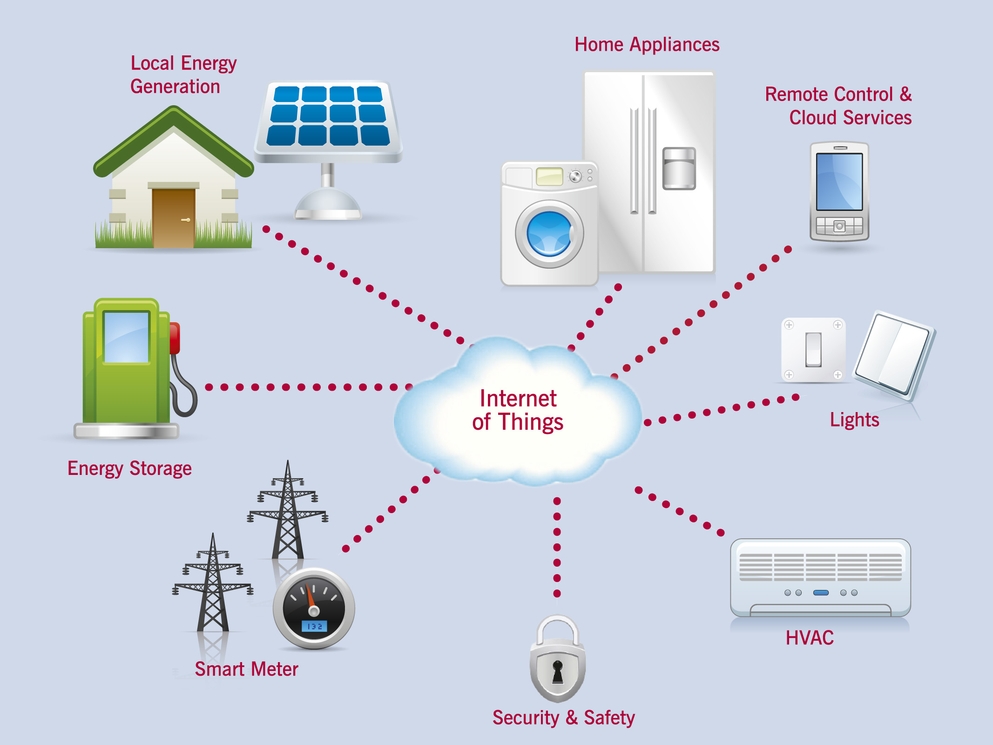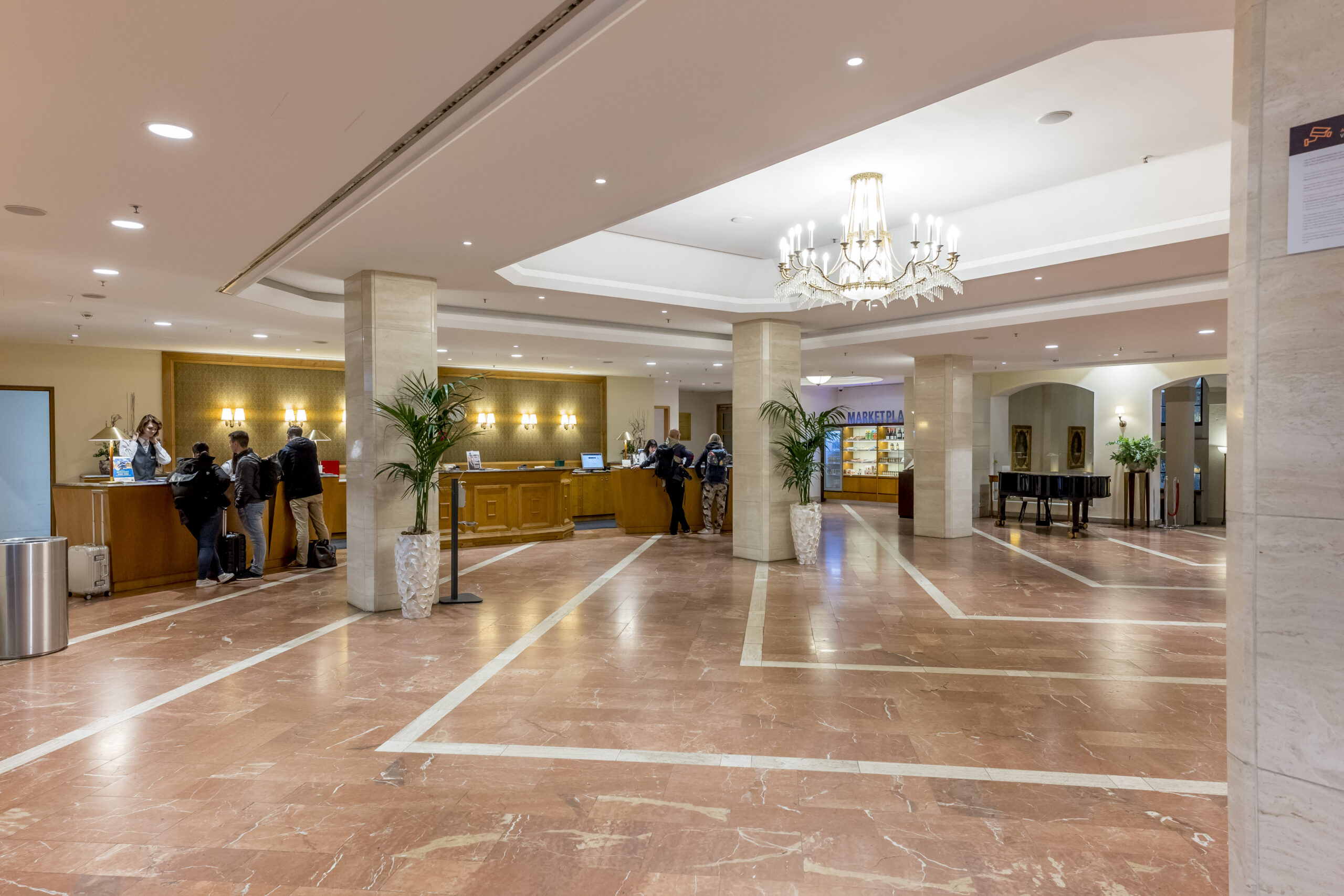Smart networking in the cloud
Issue 01-2016:
read all articles online
read as pdf
We’ve long become accustomed to them in our cars – small electronic assistants that make driving safer and more comfortable. More and more of these helpful systems are finding their way into our home environments, where they’re known as the smart home. However, they are not yet as much a matter of course here as they are in vehicles. This circumstance is changing with the move away from technology-oriented to user-oriented control. The cloud makes it possible to network nearly everything, even leading to the smart city.
The smart home is currently in a period of transition, with less emphasis on technology and more on customer benefits. While the initial focus was on the technical capabilities of controlling lights, heating and blinds from a smart phone, the products are now moving toward the easiest possible installation and intuitive operation. Self-learning heating systems that automatically adapt to the behavior of their users are increasingly found in the highly diverse smart home product range, as are central functions via wall switches and security actions.
Energy harvesting devices that communicate wirelessly are also playing a particularly important role. After all, every home will have approximately 45 networked devices in the future. Users will find it unacceptable to constantly change batteries or deal with outages due to low batteries.
Embracing interoperability
At the same time, suppliers are setting aside their isolated way of thinking and opening up interfaces to other systems, so that even today users can integrate different brands into their smart homes with only one box. This trend also makes it easier to add new functions to the system later on.
Such developments are essential to the success of the intelligently networked home, since they establish the urgently needed user acceptance. At the same time, the consumer world is increasingly networking with the professional building automation segment. Although the solutions are sold through different channels, and the products and services vary enormously in terms of their functionality and complexity, interconnectivity between the two areas builds a bridge between the easy-to-use starter packages for self-installation and the comprehensive functions of a professional installation done by constructor. The latest gadget, inviting us to try it out, is no longer what matters. Instead, simple basic systems are intended to be extended to comprehensively networked disciplines at any time, delivering the best possible individual benefits.

Via Internet to the cloud
This next step involves the Internet. The isolated solutions for controlling lights, heating, blinds and security functions are being enabled for the Internet. At first it affects only individual areas of the home, so that users can run some functions from apps on their smart phones. However, when disciplines are networked and energy management and multimedia are added, services and solutions must be developed that connect everything on the cloud.
It is what turns the home into an intelligent assistant. For example, the vacuum cleaner robot automatically returns to its station when a motion detector indicates that the resident has arrived home. The same information activates a “getting home” light scene. The cloud provides the necessary computing power and standardized command sets, so that the resident doesn’t have to operate a separate server in his home. At the same time, the number of different applications is reduced. Cool apps, connected to the cloud, will soon be able to run all disciplines.
Secure freedom of choice
Data security is and will remain an important concern. The users must always be able to decide which data they want to keep locally within their own four walls and for which services they choose an encrypted connection to the cloud.
On the way to the smart city
Advances in Internet-based networking will not stop with the smart home. A similar development for the surrounding infrastructure is still in an early stage. Functions for the intelligent control of street lights, parking places and garbage collection, etc. will be added to the smart home cloud. The result is a smart infrastructure that will network the smart home with its smart environment – forming the smart city.
Everyday assistants
The networked world will make many new applications possible. These include, for example, parking place sensors that are activated by pressure when cars drive over them. Commuters can then immediately tell where spaces are still available near the office or whether it would be better to use public transportation. This will simultaneously improve traffic flow by eliminating slowly moving cars searching for the next available space. Another scenario involves solar-based sensors that measure temperature and humidity near streets and can thus selectively warn drivers about wet areas and icy roads. Placed in parks and gardens, they activate automatic or manual irrigation systems as needed.
Infrastructure and buildings can also be networked for garbage disposal services. A single sensor notifies the homeowner whether there is still space available in the dumpster, and lets the service provider know when it’s time to pick up the garbage. Users don’t have to fret that they forgot to put out the garbage, and the sanitation company can plan resources more effectively. When it comes to supplying power and saving energy, users can adapt their peak demand to the currently applicable electricity prices.
The smart home as a matter of course
The list of possible applications on a cloud that networks homes and infrastructure is almost endless. Many such applications are still a long way off. The smart home is currently taking important steps in this direction. A few years from now, it’s intended to become a self-evident and smart assistant, just like our cars are today.
New articles in Smart Building, Smart Home
Top articles





